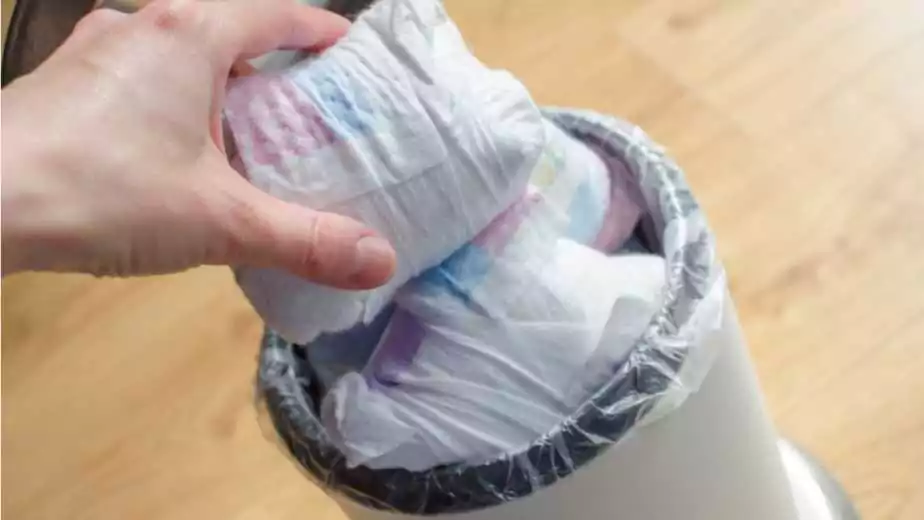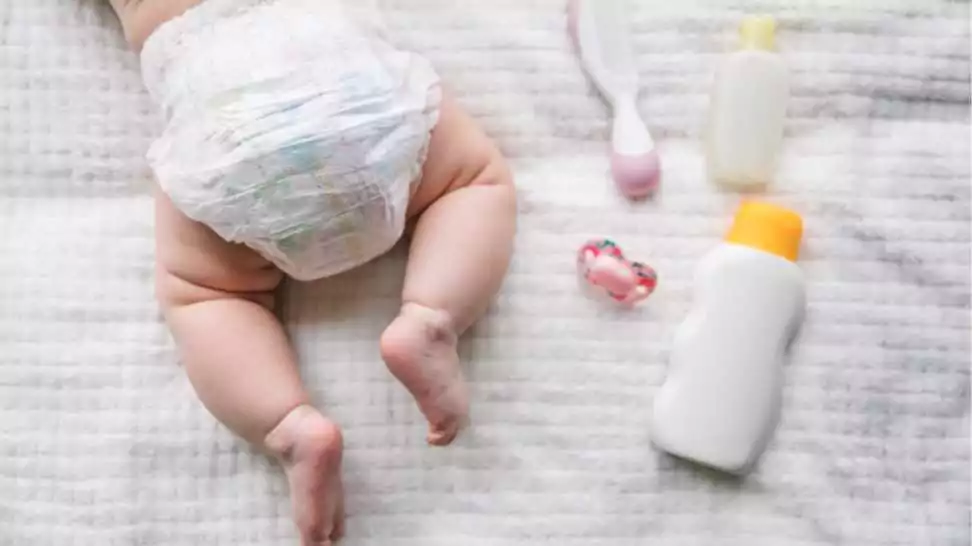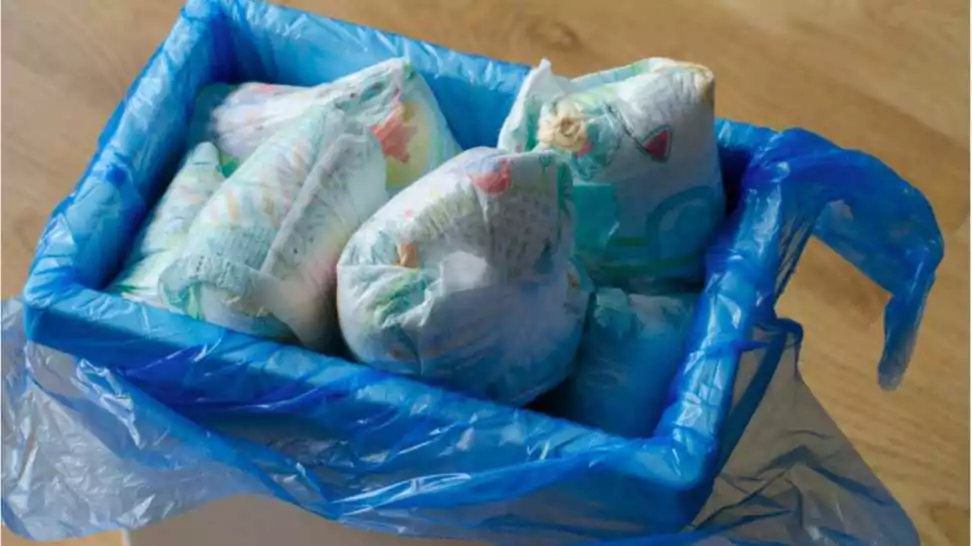How To Dispose Diapers At Home?

Mastering the art of diaper disposal is an unexpected yet crucial skill for parents. This seemingly simple task is fraught with challenges, balancing the need for convenience with hygiene and environmental responsibility. Improperly disposed diapers are not just a household nuisance; they pose a hygiene risk and contribute to landfill waste due to their plastic and super-absorbent polymer content.
Our blog provides practical, eco-friendly strategies for diaper disposal at home. Whether you’re a first-time parent or looking for more sustainable methods, we offer insights on how to dispose diapers at home effectively, keeping both your family’s health and the environment in mind.
1 Understanding Diaper Usage
Navigating the world of diapers is a fundamental part of new parenthood. With a plethora of options and opinions, it becomes crucial to understand diaper usage thoroughly, especially concerning newborns and how long a diaper can and should be used.

Is it Safe to Use Diapers for Newborns?
The question of the safety of diapers for newborns is a common concern among new parents. Fortunately, modern diapers are designed with a new-born’s delicate skin in mind. However, choosing the right type of diaper is key to ensuring your baby’s comfort and health.
Here are some tips for selecting the appropriate diaper for sensitive newborn skin:
- Material: Look for diapers that are free from harsh chemicals, fragrances, and dyes. Diapers labelled as hypoallergenic or made for sensitive skin are generally a good choice.
- Fit: Ensure the diaper fits snugly but not too tightly. A good fit helps prevent leaks and minimises the risk of diaper rash.
- Breathability: Diapers that allow air circulation help keep the skin dry and reduce the likelihood of rashes.
- Wetness Indicator: Many newborn diapers come with a wetness indicator, which can be very helpful in determining when it’s time for a change without unnecessary checks.
How Long a Diaper Can be Used?
Understanding when to change a diaper is as important as selecting the right one. While there’s no one-size-fits-all rule, here are some general guidelines and signs to look out for:
- Frequency of Change: Newborns typically need a diaper change every 2 to 3 hours. As babies grow, this frequency may decrease. Always change the diaper immediately after a bowel movement.
- Signs to Change: Look out for signs like heaviness, sagging, or a noticeable smell. A diaper that feels significantly fuller or has expanded in size is a clear indication that it’s time for a change.
- Discomfort: If your baby seems uncomfortable or is crying more than usual, it could be a sign that their diaper is wet or soiled.
- Health Considerations: Prolonged exposure to a wet or dirty diaper can lead to diaper rash or infections. Regular checks and timely changes are crucial for your baby’s health.
2 Types of Diapers
Diapers come in various forms, each with its unique set of advantages. Understanding these types can help parents make informed decisions based on their lifestyle, budget, and environmental concerns.
Disposable Diapers
Disposable diapers are the go-to choice for many parents due to their convenience and ease of use. Here’s an overview:
- Convenience: The primary advantage of disposable diapers is their convenience. They are easy to put on and take off, and there’s no need for washing – simply dispose of them after use.
- Absorbency: They are highly absorbent, keeping moisture away from the baby’s skin for longer periods.
- Availability: Disposable diapers are readily available in stores and come in various sizes to fit babies as they grow.
- Travel-Friendly: They are particularly useful while travelling, as they don’t require immediate washing.
However, it’s important to consider their environmental impact, as they contribute significantly to landfill waste.
Reusable Diapers
Reusable diapers are an environmentally friendly alternative to disposables. Here’s what you need to know:
- Environmental Impact: Reusable diapers significantly reduce waste as they can be washed and reused many times.
- Cost-Effectiveness: Initially, they may be more expensive than disposables, but over time, they can be more economical since they are used repeatedly.
- Material: They are often made from natural fabrics, which can be gentler on the baby’s skin.
- Variety: Reusable diapers come in various styles, such as pre-fold, fitted, and all-in-ones, offering flexibility in choice.
How to Use Reusable Diapers?

Using reusable diapers involves a few more steps than disposables, but with a bit of practice, it becomes a simple routine:
- Preparation: Before first use, wash the diapers to increase their absorbency.
- Fit: Ensure a snug fit around the waist and legs to prevent leaks.
- Changing: Change the diaper as you would a disposable, but instead of throwing it away, place it in a designated bin or wet bag.
- Cleaning: Rinse off any solid waste in the toilet. Store the diapers in a dry pail until ready to wash.
- Washing: Wash diapers in a machine with a gentle, baby-friendly detergent. Avoid fabric softeners, as they can reduce absorbency.
- Drying: Line dry or use a dryer in a gentle setting. Sunlight can help naturally bleach and disinfect the diapers.
3 Disposal Methods for Disposable Diapers
While disposable diapers offer convenience, their disposal requires careful consideration to ensure hygiene and minimise environmental impact.
Regular Trash Disposal

Disposing of disposable diapers in regular trash is the most common method. However, proper disposal techniques can make a significant difference:
- Wrapping the Diaper: Always wrap the used diaper tightly to contain any waste and odours. Many diapers come with adhesive strips that can be used to seal them closed after use.
- Diaper Pails: Consider using a diaper pail with a lid to temporarily store wrapped diapers. These specialised bins often have odour-control features to keep unpleasant smells at bay until trash day.
- Understanding Local Regulations: It’s essential to be aware of local waste disposal regulations regarding diapers. Some areas may have specific guidelines or designated facilities for diaper disposal to prevent sanitation issues.
- Hygiene: Always wash your hands thoroughly after handling used diapers to maintain good hygiene.
Innovative Disposal Methods
In response to environmental concerns, there are several innovative diaper disposal methods gaining popularity:
- Biodegradable Diapers: While not a disposal method per se, opting for biodegradable diapers is a step towards eco-friendliness. These diapers decompose more quickly than traditional disposable diapers.
- Diaper Recycling Programs: In some areas, diaper recycling programs are available. These programs compost or recycle the components of diapers, significantly reducing landfill waste.
- Composting Services: For biodegradable diapers, some commercial composting services can process them, turning them into useful compost material.
- Community Initiatives: Participating in community-led initiatives focused on sustainable diaper disposal can also be a way to contribute to environmental conservation efforts.
4 Environmental Concerns and Alternatives
While diapers are a necessity in childcare, their impact on the environment cannot be overlooked. This section discusses the ecological footprint of disposable diapers and presents viable alternatives.
The Environmental Impact of Disposable Diapers
Disposable diapers, while convenient, pose significant environmental challenges:
- Landfill Waste: An average child uses thousands of diapers before being toilet-trained. These diapers, predominantly made of plastic, contribute massively to landfill waste.
- Non-Biodegradable Materials: Many disposable diapers are made from materials that do not biodegrade easily, taking hundreds of years to decompose.
- Production Footprint: The production of disposable diapers involves the consumption of large amounts of water, energy, and resources like wood pulp, contributing to their ecological footprint.
- Chemical Pollution: The manufacturing process of disposable diapers can release harmful chemicals into the environment, impacting ecosystems.
Alternatives to Disposable Diapers
In response to these environmental concerns, many parents are turning to sustainable alternatives:
- Cloth Diapers: Reusable cloth diapers are an effective alternative. They reduce waste, can be more economical in the long run, and are made from natural materials that are gentle on baby’s skin.
- Biodegradable Diapers: Biodegradable diapers, made from natural and compostable materials, are a more eco-friendly disposable option. They decompose much faster than traditional disposable diapers.
- Community Resources: Many communities now offer resources for environmentally conscious parenting. This includes diaper-swapping groups, cloth diaper laundering services, and educational workshops on sustainable childcare.
- Government and NGO Initiatives: Look for local government or non-governmental organisation initiatives that promote environmental sustainability in childcare. These programs often provide resources and support for using eco-friendly diaper alternatives.

5 Controversial Practices in Diaper Disposal
Diaper disposal can sometimes involve controversial practices due to their environmental and health implications. One such practice is the burning of diapers at home.
How to Burn Diapers at Home?
The idea of burning diapers at home, often considered for convenience or as a method to reduce trash volume, raises several critical concerns:
- Health Implications: Burning diapers, especially those made with synthetic materials, releases toxic chemicals into the air. These can include dioxins, furans, and other harmful pollutants that pose significant health risks, especially to children and the elderly.
- Environmental Impact: The burning of plastics and other non-biodegradable materials found in diapers contributes to air pollution and the release of greenhouse gases. This practice directly impacts air quality and contributes to broader environmental degradation.
- Legal Considerations: In many regions, burning household waste, including diapers, is illegal due to potential health and environmental hazards. It’s essential to be aware of and comply with local regulations and guidelines.
- Safer Alternatives: Instead of burning, consider environmentally friendly disposal methods discussed in previous sections, such as using biodegradable diapers or participating in diaper recycling programs. These alternatives are safer for both the environment and public health.
6 Wrapping Up
In this guide, we’ve navigated the complexities of diaper use and disposal, addressing both the practical and environmental aspects. From choosing the right diaper for your newborn to exploring sustainable options like cloth and biodegradable diapers, we’ve covered essential topics for every parent.
The importance of responsible diaper disposal, especially considering the environmental impact of disposables, cannot be overstated. We’ve highlighted various disposal methods, emphasising the need for eco-friendly choices and cautioning against harmful practices like burning diapers.
As parents, our decisions have lasting effects on both our families and the environment. We encourage you to embrace sustainable practices in diaper disposal and share your experiences. Your contributions can help foster a community of environmentally conscious parents, collectively making a positive impact on our world.
Community Q&A
About This Article
This article has been viewed 147 times.



